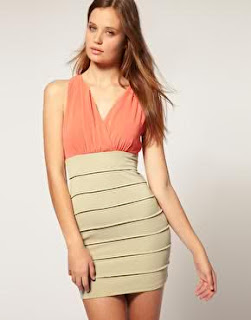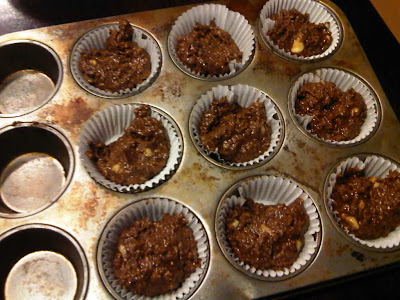Summer is just around the corner which means parties, cocktails, weddings, formal functions, brunch with the girls and going out to dinner in super sexy dresses. Very few girls are satisfied with the body that they have been given, even some supermodels who we envy wish they had larger breasts or smaller hips.
Luckily there are some tips and tricks to make the most of what you’ve got to live your Fab Life with. We give you some insight into picking out the best dress when you go shopping for Summer 2012!
If you are...
Short
Short girls should show off their compact build with simple silhouettes and accentuate their petite figure. A complicated design, over-the-top embellishment and detail will overwhelm your figure.
- Wear a dress that falls just above or just below the knee.
- A wrap-dress, shirtdress or empire style might do wonders for your petite frame.
- Choose dresses with vertical details, creating a vertical and taller line such as buttons, seams and piping
- Choosing a monochromatic style may have a lengthening effect (as seen with the one-colour yellow dress, above)
Tall
If you are tall you can get away with so much.One of the most important things in taller girls is the hemline: a longer hem may look fantastic or try a dress at calf-length which shorter girls cannot wear. Going too short, leave you looking like you are baring too much.
If You Have a Long Waist and Short Legs
You need to create the illusion of a shorter waist and longer legs. To do this, avoid anything that accentuates your natural waist line.
- Empire dresses, semi-fitted dresses and even something in an A-line will work well.
- Lead the eyes upward and away from your waist with detailing on the top (as seen in the picture below)
- Keep the hemlines short: above or on the knee is best to create longer legs
When looking at the girl below, you can see that her natural waistline is not emphasized and all the attention is focused on top!
If You Have a Short Waist and Long Legs
Create the illusion of a longer waist by wearing a dress that has torso lengthening draped neckline, A-line dresses or empire style dresses which hides your natural waistline.
- Again, remember that detailing on the top will draw any unwanted attention away from your waist.
- Hemlines to be around or above the knee
Curvy
If you have a curvy figure, you can show it off by choosing a dress that accentuates your waist, such as a belted number or dress with a fitted top and a loose flowy bottoms. A tulip skirt might also emphasize without making you look bigger. Semi-fitted styles will follow your curves without clinging to your body.
- Wrap dress, shirt dresses and full skirts
- Remember that something too loose or too tight will make you look bigger
- Stay away from high necklines, a lower neckline is very flattering to a curvy lady. You can even consider off-shoulder or strapless dresses.
- Exposing either legs, or cleavage may have a very slimming effect
Full Bust
Having a full bust does not mean that you have to miss out on feminine dresses. Support your breasts with a fitted dress that has straps so that you can show off your amazing figure but still have the opportunity to wear a good supportive bra. A scoop neck may reveal just the right amount of cleavage and a wrap dress’ neckline might also make you feel like a million dollars.
- Semi fitted shapes that have open necklines and nipped-in waists.
- Shirtdresses, wrap-dresses and shifts
- Avoid high neck-lines, boat-necks
- Avoid full or detailed sleeves, formless dresses, tunics or wide belts. You might just look top-heavy
- Choose a V-neck, scoop neck or a sweetheart neckline
- Choose a dress with a simple top. You want to avoid any more attention to your breast-area
- A flared skirt will create a good balance with your torso
Small Bust
Flaunt what you’ve got with more daring and detailed necklines. Cutout tops and strapless styles may be ideal for you who need minimal support.
- Empire, fitted-sheath and strapless styles add definition to your bust
- An A-line, shift or shirtdress may also enhance your shape
- You can get away with detail, ruching and ruffles on the top, the added bulk will add a fuller effect
- If a dress has darts or boning that you cannot fill out, stay away!
Pear Shaped
Choose a dress with an A-line bottom and a fitted bodice. Draw the eyes to your top half by embellishments or details. A dress that is darker at the bottom may also flatter you style such as a two-tone dress with a black bottom half. Darker matt colours may also help to create a narrower hip-line
If You Have a Tummy
If you have a bit of a bulge (as most do after the winter) look out for a dress that does not put any emphasis on the waistline such as a shift dress or an empire style dress and dresses with matching jackets or coats.
- Stay away from anything that is tight around the waist, stiff or even bulky. This will just make you look even bigger instead of hiding the flaws.
- Monochromatic looks are most flattering
- Draw eyes to your open neckline to avoid unwanted attention to your waist.
Nothing can look better in a dress than the best version of YOU. Get the Fab-Life by eating well, keeping fit and staying healthy. Your obvious glow is the most flattering no matter what you are wearing

























